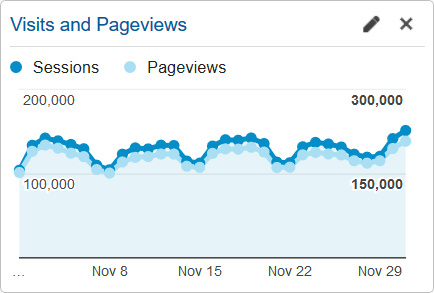In this post, we will discuss some Blogging Tips to follow that will help you make your blog what you want it to be. It is important first to keep your readers happy. A new blogger will find many of these tips quite helpful. Some things make a blog a good one. Let us have a look at the points which a beginner should consider.
Blogging Tips for new bloggers & beginners

To start blogging as a beginner, choose a niche you’re passionate about, select a blogging platform like WordPress, Wix, Blogger, etc., and register a domain name. Customize your blog with a theme, write valuable, SEO-optimized content for your audience, and publish regularly. Begin each post with a structured outline to ensure coherence and engagement. Engage with readers through comments and social media to grow your blog’s visibility.
Conduct thorough audience research to understand their preferences. Draw inspiration from existing online content and use keywords effectively to enhance visibility. Organize your blog into clear categories and plan your content with an editorial calendar.
1. The design of your blog
The design of your blog has to be good. It shouldn’t be messy with many things here and there. A simple and clean one will do the job. Decide if you want a traditional blog-style design or a magazine-style design. See what suits your niche the best and go for it. Use a readable font. Google web fonts directory offers hundreds of web-safe fonts. You may want to check it out. Also, check out your website in different screen sizes & resolutions.
2. Speed
Among the important but underrated blogging tips is the speed with which your blog loads. It matters now! 4-5 seconds are what you should target. Anything more, and you can be sure that the visitor will just go away – especially on mobile devices. Your blog should not have loads of advertisements, eye candy, etc., to the extent that it increases the load time. Having too many Javascript, eye-candy, toolbars, etc., just adds to the load time. So, optimize the load time of your blog. Take the Google Page Speed Online test.
Optimize your web page for Page Speed, Page Experience and CWV to ensure that it is at least in the Orange and not Red zone, but fret too much over it. The point is not to get in the Green zone but to offer a good user experience.
3. Search button
See to it that your blog has a properly placed “Search” button. Many times, a reader might also want to see whether the content he wants to read is available or not on your blog. He wouldn’t want to go through all your Archives. People are used to seeing the search bar on the top right side of the web page. Placing it conveniently can actually increase your page views. Most good CMS like WordPress and themes offer this feature built-in now.
4. Social Media
This is one of the most essential parts of a blog now. Make sure your blog has a Z (Twitter), LinkedIn, Instagram, and Facebook page. Include Share and Follow icons and links in your sidebar. Add a subscribe to RSS Feed and E-letter button on your blog at such a place where it easily gets noticed. This will get you regular readers and, in turn, be beneficial for you.
5. Blog posts
While there may not be any written rule, try to make your blog posts of at least 500 words or above. Format them properly in paragraphs, with a paragraph having not more than 5-6 lines. Use bold or italics to highlight some words or terms. Use an H2 or an H3 tag in the post for the headings or sub-headings. This makes for easy readability.
6. Keywords
Include search engine-friendly keywords in your post. This will get you web traffic from search engines. Also, use the post title as a headline to attract the interest of your readers. The page titles should be search-friendly. Each post should have a title that will attract attention but at the same time, also be relevant to the post. The easiest way is to use good keywords is to use the drop-down suggestions from the Google.com search bar.
7. Focus on the topic
It might happen at times that you want to write something, and you end up writing something else. When you write a post, always define your topic boldly and make sure you stick to it. By doing so, you will have loyal readers who will love reading your posts. Font ramble in the first paragraph. I prefer to write directly about the post summary in the first paragraph.
8. Keep updating your blog
Whenever possible, try to update your blog if you can do it daily – great! Search Engines will regularly update your posts by sending robots and spiders to your blog. If you publish new posts, you can be assured that they will quickly get indexed.
9. Images
Make sure your blog post has at least an image in it. This breaks the monotony and keeps the readers glued to your post and makes it interesting. If your post is just a collection of hundreds of words, you will likely lose visitors from your blog. Optimizing the size of the images also helps in reducing the load time of the post. Name the image with the keyphrase. Also, remember to give them an Alternative text and Image Title attribute.
10. Focus on Content first and, later on, on the art & science of blogging
Many new bloggers I have noticed make one mistake. They focus more on HOW TO blog rather than WHAT TO blog. I suggest you find good topics and blog consistently for maybe six months to a year. Once you are settled in, you can start looking at questions like how to increase page views, how to decrease bounce rate, how to increase RSS Feed Subscribers, how to increase blog comments, how to improve Alexa ranking, how to do this, or how to do that.
11. Old is not Gold in Blogging
Always write something new. Don’t write content that is old. Old content is what people are already aware of. If your traffic is from search engines, then you won’t get any traffic by writing old content, as there won’t be anyone searching for that stuff. If you have good subscribers, then this is the worst thing as you might lose them. Search engines look for updated content.
12. Blog Indexing
Once your blog is up and running, submit it to search engines. Submit your blog to various search engines and a few directories if you wish. Get your new blog or website indexed quickly by search engines. Have a look at the freeware Website Link Submitter.
13. Monetization
Once your blog is 6 months to one year old, then you can start thinking of monetizing it. Apart from signing up with Google AdSense or some Google AdSense alternative programs, you can also consider selling some products by signing up for Affiliate programs or Paid Reviews – if you wish. While placing ads above the fold is a good way to improve ad performance and make more money, you must also take care to ensure that your readers can easily find the content they are looking for. Read this post on new Panda-friendly Google AdSense layouts for your blog. If you have just signed up for AdSense and your ads are not showing even after 48 hours, you may want to use the Google AdSense Troubleshooter. Later on, if you wish, you can also maximize AdSense revenue by implementing section targeting.
14. Search Engine Optimization
When you have 100 or so posts under your belt, you may want to shift a part of your focus from generating the content to the art and science of blogging. Always keep in touch with the latest Google Search Engine Ranking Factors. Follow some basic SEO Tips to get better Search Engine Ranking, use a good WordPress SEO plugin like Yoast’s, and read Google’s very own Search Engine Optimization Starter Guide, and you are good to go. Once you are set in, focus on increasing organic search engine traffic – this is the one that actually pays!
15. Blog Security
Once your blog becomes popular, it may get targeted. You may then want to think of hardening the security of your WordPress site. If ever you find that someone is copying your content, this post will help you deal with Plagiarism and Online Content Theft.
16. Hosting
Sign up with a good host. Check this if you are looking for free Web Hosting sites.
Final words
Blog with Passion. Blog with Conviction. And blog consistently. Don’t blog to make money, blog to build a reputation. Money will follow…and so will traffic and satisfaction!

Don’t waste your time reading those ‘Learn how to make quick money‘, ‘I will show you how to make $100000 in a month‘ or ‘I will show you how to exponentially increase your organic traffic in 1 month‘ kind of blogs. They may or may not be making that kind of money, but if they are, they may actually be making much money by selling you ‘hope’ or eBooks on ‘How to make money’.
What would be interesting to know is that if they weren’t selling such material, would they still be making such money? It would also be, actually interesting to find out HOW MANY who read such blogs or buy such eBooks actually end up making even 10% of his figure! You see, most such sites make money by telling you, how to make money – in short by selling you ‘Hope’!
Blogging for Money over Passion could potentially lead you to failure!
It is good to generate your own content rather than just using AI tools to get re-hashed or re-generated content from the web. AI tools have their uses, by be circumspect while using them.
Many also waste time looking at their traffic stats and earnings every day. Don’t waste too much of your time looking for SEO shortcuts to get quick traffic. Focus on content, blog consistently, use good English and don’t give up. It will be just a matter of time before your blog starts getting good traffic, and you could well end up earning even a 5-figure USD income every day!
Remember, every blogger has his day…it’s just a matter of time!
Read next: List of 20 Top Blogs in India.
How can I make $1000 a month blogging give your best tip?
To make $1000 a month blogging, focus on creating high-quality, SEO-friendly content that targets your niche audience. Monetize your blog using multiple streams such as affiliate marketing, sponsored posts, ads, and selling digital products or services. Consistently engage with your readers and optimize your site’s user experience to increase traffic and revenue.
What is the most common mistake for first-time bloggers?
The most common mistake for first-time bloggers is not having a clear focus or niche, leading to scattered content that doesn’t attract a loyal audience. Beginners often overlook the importance of consistency in their posting schedule and SEO optimization, which are critical for building visibility and engagement.
thats a very nice and honest tips. Thanks
Excellent tips sir and very precise indeed. Thanks for helping us :)
Thanks Shiwangi. It was old post, which I decided to update today.
Nice and really helpful post… I’m saving that one…
Thanks Seath.
Thanks for a great post. Very informative and inspiring. :)
Thanks Ankit. :)
Brilliant!!! Hats off to you sir!!!